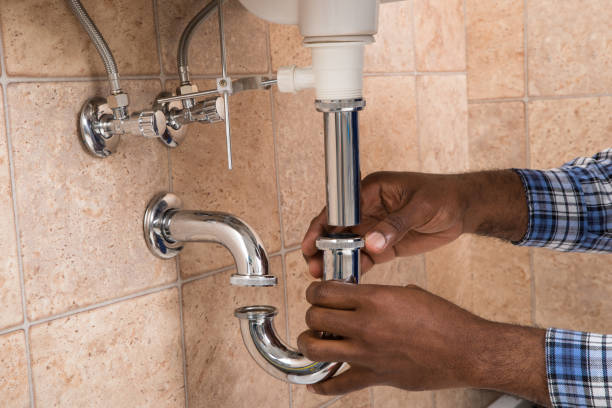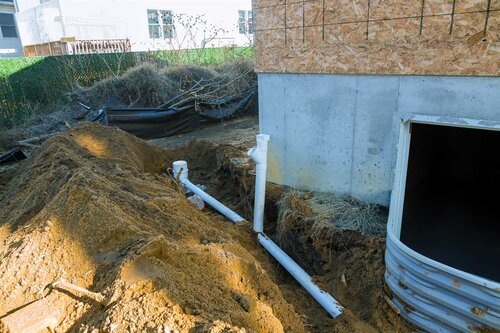Deciphering the Core Concepts of Home Plumbing: A Beginner's Overview
Deciphering the Core Concepts of Home Plumbing: A Beginner's Overview
Blog Article
We've come across the article on Plumbing Basics Every Homeowner Should Know down the page on the internet and thought it made perfect sense to share it with you in this article.

Plumbing is a vital facet of any home, responsible for providing clean water for alcohol consumption, cooking, and showering, as well as eliminating wastewater securely. Comprehending the essentials of home plumbing is essential for every property owner to guarantee proper maintenance, troubleshooting, and, if necessary, repairs. In this beginner's overview, we'll cover the essential concepts of home plumbing to help you become extra familiar with how it functions.
Water System System
The water system system brings clean water right into your home from a local water source or a private well. It contains a primary water line that connects to your home's plumbing system, usually situated underground. A water meter determines the amount of water taken in, while a shut-off valve permits you to manage the flow of water right into your home.
Plumbing Fixtures
Plumbing components are gadgets that deliver water to numerous parts of your home and consist of sinks, taps, bathrooms, showers, bath tubs, and home appliances such as dishwashers and cleaning makers. Each fixture is attached to the water system system via pipes and installations and may have its shut-off valve for upkeep or emergencies.
Water Heater
The water heating unit is in charge of heating water for residential use, including showering, cooking, and cleansing. Common sorts of water heaters consist of tank-type water heaters, tankless (on-demand) hot water heater, and heatpump water heaters. The water heater is attached to the supply of water system and supplies hot water to plumbing components as required.
Drain System
The water drainage system removes wastewater from your home and lugs it away to a sewer therapy facility or septic tank. It contains a network of pipes, installations, and components that transfer wastewater from plumbing components to the major sewer line or septic tank. Correct drainage is important to protect against clogs, backups, and sewer leakages.
Ventilation System
The ventilation system assists preserve correct air pressure and avoid drain gases from entering your home. Air vent pipelines, also known as air vent heaps, expand from plumbing components to the roof, allowing drain gases to get away securely outdoors. Ventilation pipes likewise permit air to go into the drainage system, helping with smooth wastewater circulation and stopping suction or vacuum results.
Usual Plumbing Tools
Having the right tools handy is essential for carrying out fundamental plumbing repair services and maintenance tasks. Typical plumbing devices consist of flexible wrenches, monkey wrench, pliers, pipeline cutters, hacksaws, bettors, augers (or drainpipe serpents), and Teflon tape. Having these devices readily available can help you tackle minor plumbing issues effectively.
Fundamental Plumbing Repair Services
While some plumbing repair services might need specialist aid, several usual concerns can be resolved with fundamental DIY methods. Knowing exactly how to repair a leaking faucet, unclog a drain, change a commode flapper, or fix a leaking showerhead can save you time and money on plumbing fixings.
Verdict
Recognizing the basics of home plumbing is important for every house owner to preserve a safe, useful, and reliable plumbing system. By familiarizing on your own with the water system system, plumbing fixtures, drainage system, air flow system, common plumbing tools, and basic repair services, you can confidently attend to minor plumbing concerns and ensure your home's plumbing system runs efficiently.
Plumbing for Beginners: A Comprehensive Guide
If you’re a beginner when it comes to plumbing, don’t worry; you’re not alone. Plumbing may seem intimidating, but with the right knowledge and a little practice, you can handle many common plumbing issues on your own. In this comprehensive guide, we will demystify the world of plumbing for beginners, providing you with the basic knowledge and skills needed to tackle common plumbing problems and even take on some DIY plumbing projects.
The Importance of Basic Plumbing Knowledge for Beginners:
First and foremost, basic plumbing knowledge gives you a solid foundation. It helps you grasp the key concepts and terminology that are essential in this field. By learning the basics, you’ll be able to build upon that knowledge and tackle more complex plumbing tasks in the future.
Having a basic understanding of plumbing also enables you to handle common issues that may arise in your home. Picture this: a leaky faucet or a clogged drain. With some basic plumbing knowledge, you’ll have the confidence to troubleshoot and fix these problems on your own. It saves you from unnecessary expenses and the hassle of waiting for a professional to arrive.
As a beginner, learning the basics of plumbing empowers you to take care of your own home. It gives you a sense of independence and self-reliance. You’ll no longer have to rely solely on professionals for every small issue that pops up. Instead, you can handle many tasks yourself, saving time and money in the process.
Remember, everyone starts as a beginner. Embrace the learning process and take small steps to expand your plumbing knowledge. There are plenty of online resources, tutorials, and even local workshops that talk about plumbing for beginners.
Essential Tools for Plumbing for Beginners
As you start your plumbing journey, having the right tools in your toolbox is crucial. Let’s explore some of the must-have tools:
Adjustable Wrench:
This versatile tool is a staple in any plumber’s toolbox. It allows you to tighten or loosen nuts and bolts of various sizes. Make sure to have an adjustable wrench with a comfortable grip.
Pipe Wrench:
A pipe wrench is specifically designed for gripping and turning pipes. It has serrated jaws that provide a strong grip, making it easier to loosen or tighten threaded pipes and fittings.
Plunger:
The plunger is a simple yet effective tool for clearing clogged drains and toilets. It creates suction when you push and pull, helping to dislodge blockages. Keep a good-quality plunger handy for those unexpected clogs.
Pipe Cutter:
When it comes to cutting pipes, a pipe cutter is your go-to tool. It creates clean, precise cuts without damaging the pipe. Look for a pipe cutter that can handle the pipe sizes you’re working with.
Hacksaw:
A hacksaw is useful for cutting through pipes, screws, and other materials. It’s a versatile tool that can handle different cutting tasks. Remember to use a blade suitable for cutting metal.
Tape Measure:
Accurate measurements are crucial in plumbing. A tape measure allows you to measure pipe lengths, distances, and dimensions accurately. Opt for a sturdy tape measure that extends a good length.
Pliers:
Pliers come in handy for various tasks, such as gripping, bending, and cutting. Slip-joint pliers with adjustable jaws are great for gripping pipes, nuts, and bolts.

We hope you enjoyed reading our excerpt about Understanding the Basics of Your Home's Plumbing System. Many thanks for taking time to read our content. Sharing is caring. You won't know, you may just be doing someone a favor. I love your readership.
Click Here Report this page